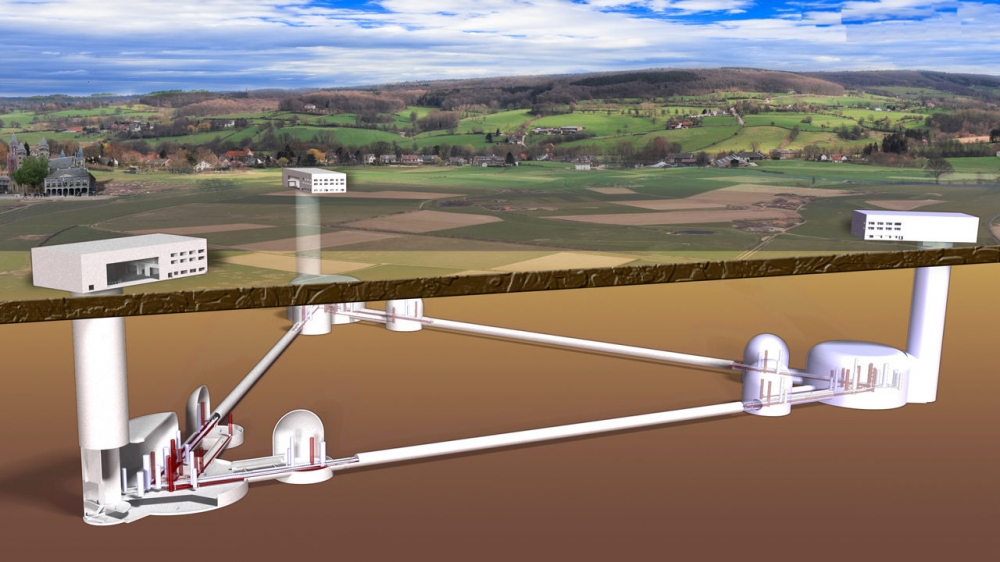Giant gravitational wave detectors could hear murmurs from across universe

Europe’s proposed Einstein Telescope, an early design of which is shown here in an artist’s conception (not to scale), would comprise six detectors in a triangular arrangement of tunnels. ET CONCEPTUAL DESIGN TEAM
By Adrian Cho Mar. 10, 2021
Just 5 years ago, physicists opened a new window on the universe when they first detected gravitational waves, ripples in space itself set off when massive black holes or neutron stars collide. Even as discoveries pour in, researchers are already planning bigger, more sensitive detectors. And a Ford versus Ferrari kind of rivalry has emerged, with scientists in the United States simply proposing bigger detectors, and researchers in Europe pursuing a more radical design.
“Right now, we’re only catching the rarest, loudest events, but there’s a whole lot more, murmuring through the universe,” says Jocelyn Read, an astrophysicist at California State University, Fullerton, who’s working on the U.S. effort. Physicists hope to have the new detectors running in the 2030s, which means they have to start planning now, says David Reitze, a physicist at the California Institute of Technology (Caltech). “Gravitational wave discoveries have captivated the world, so now is a great time to be thinking about what comes next.”
See full text